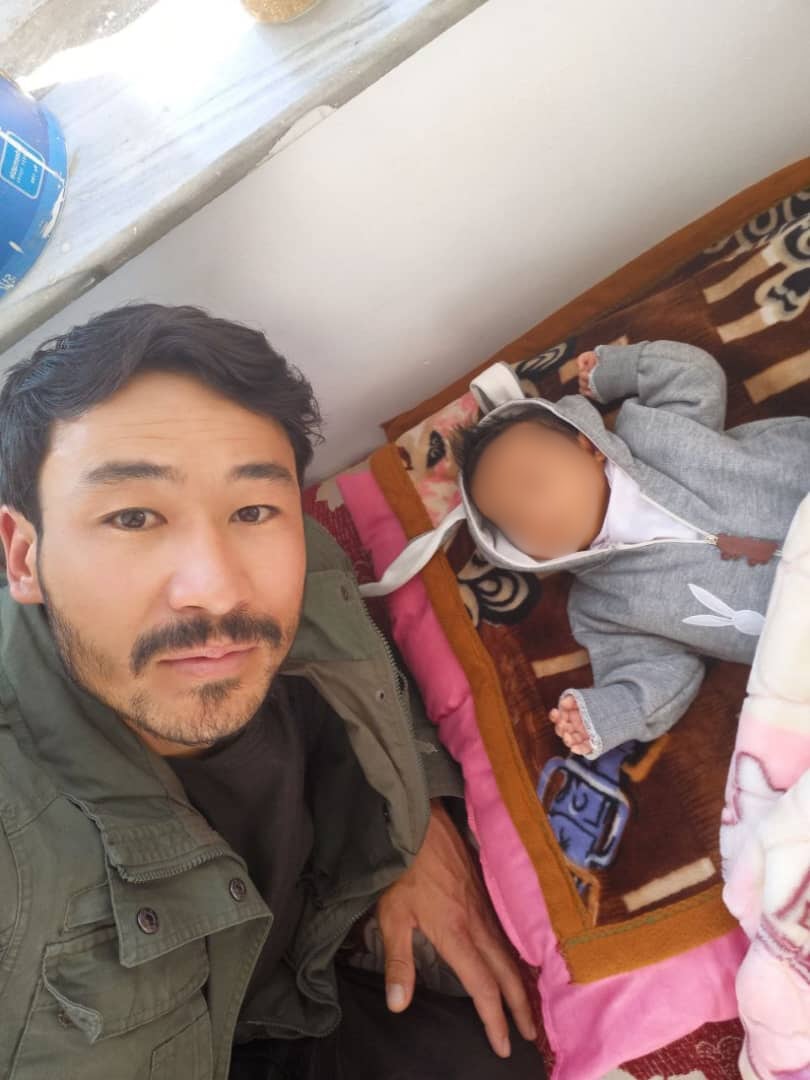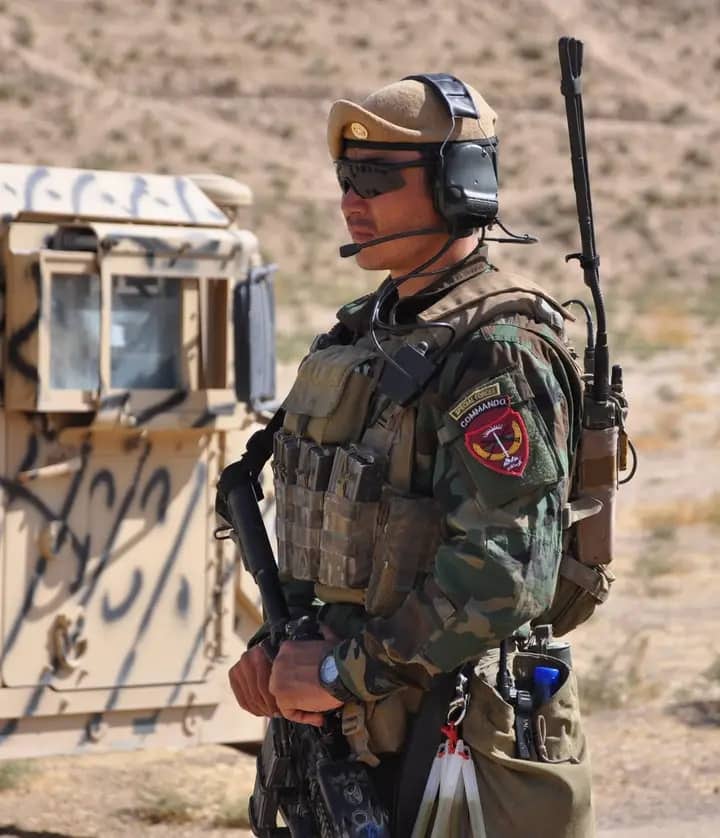Ali Gul Haidari was a platoon sergeant in one of the Afghan Army’s most elite commando units partnering with U.S. Army Special Forces troops for missions to retake district centers from the Taliban in north and eastern Afghanistan.
Haidari and his Afghan teammates blended in with their U.S. counterparts “down to the ballcaps and Oakleys,” a still-serving Special Forces officer said.
When the U.S. military pulled out of Afghanistan in 2021, Haidari was left behind, despite the target on his back as a known supporter of American troops. He was captured and tortured by the Taliban for 40 days within months after the U.S. pullout.
Following release, he fled with his wife and young daughter to a neighboring country, but was ultimately arrested and deported back to Afghanistan.
Last year, members of the Taliban surrounded the house he was in. When he emerged to speak with them, they gunned him down before he could say anything, while his wife and children looked on.

Haidari’s case is just one of dozens of killings of Afghan forces documented in a new investigation demonstrating that the dangers faced by the U.S.’ former allies in Afghanistan persist until today.
Military Times, reporting in partnership with the investigative journalism organization Lighthouse Reports, has identified 110 killings of former Afghan National Defense and Security Forces since 2023, the last year that the United Nations published a standalone report on Taliban killings of Afghan forces.
The new data, compiled with support from the Afghan news outlets Hasht-e Subh (8am Media) and Etillaat Roz, includes members of the Afghan special operations forces, who worked in close partnership with U.S. Special Forces troops.
These numbers are almost certainly an undercount as a climate of fear exacerbates the challenge of verifying cases.
The new data also comes on the heels of a move this summer by the U.S. government to end temporary protected status for more than 9,000 Afghans in the U.S., leaving them vulnerable to deportation.
About the same time, a top Taliban official offered an amnesty for Afghans returning from overseas — their latest amnesty pledge.
This new data illustrates that promises of amnesty do not amount to credible security assurances for Afghan allies of the U.S., despite efforts by the administration to claim “an improved security situation.”
Moreover, President Donald Trump’s January suspension of the Refugee Admissions Program has closed a critical path to safety for those who helped the U.S. and might have sought admission under the P1 and P2 designations, designed for those requiring special protection or with compelling humanitarian needs.
“As we continue to assess the fallout from Afghanistan, it is clear that our responsibilities did not end when U.S. forces withdrew. Accountability is not optional,” Rep. Mike Lawler, R-N.Y., said in a statement to Military Times.
Lawler highlighted his introduction of the bipartisan Enduring Welcome Act, which would maintain a database of Afghan allies and reinstitute a U.S. State Department office focused on Afghan relocation.
“The targeting of our Afghan allies makes clear that our work remains unfinished,” he said. “For the sake of the men and women who stood with us, and for America’s moral standing in the world, we must do more, and we must do it now.”
While danger persists, it’s getting harder to document. Sanjar Sohail, founder and publisher of Hasht-e Subh (8am Media), told Military Times he has a network of about 35 journalists still in Afghanistan working to document Taliban revenge acts even as the ability for international organizations to do this accountability work has waned.
What he’s seen in the cases of former Afghan military and special forces troops returning to Afghanistan, he said, illustrates the danger to those facing deportation now.
“They go back to Afghanistan, either they disappear right after entering Afghanistan, or after a few days they disappear. And then after a few days, their bodies are discovered somewhere, outside the cities or villages,” he said. “So, this is something systematic. This is happening for the past four years, and it will be very dangerous for these people if they get back to Afghanistan.”

Sohail said he believed failure to document Taliban violence was making the organization more bold and dangerous.
“Our lack of accountability is actually paving the way for the Taliban to commit more crimes inside Afghanistan,” he said.
Loved ones of those targeted by the Taliban are typically left feeling helpless and without recourse. In an emotional letter provided to the reporting partnership, Haidari’s widow described the physical effects of his torture at the hands of the Taliban.
“His entire body was black and swollen; he couldn’t even sleep on his back,” she wrote. “He would wake up screaming at night.”
She mourned the memories her oldest daughter, Hana, would never be able to make with her father, and that her younger daughter, Elena, “had been deprived of him forever.”
“She asks me why the Taliban shot her father, and to this day I don’t have an answer to this question and countless other questions she has.”
The reporting team did not speak with any relatives still inside Afghanistan out of concern for their safety.
Other cases documented by the new investigation include a former Afghan special operation forces member who lived in such fear of reprisal that he refused to marry. In 2024, his body was found riddled with bullet holes.
Former Afghan soldiers described being tortured by Taliban forces in an effort to hunt down their former colleagues, belying the Taliban’s claims that any reprisal killings are isolated cases of personal revenge.
Another Afghan soldier who worked with American troops and survived Taliban torture described being hung upside down and subjected to electric shocks, in an effort by his captors, ultimately successful, to force him to unlock his phone as they sought information on former colleagues.
He was repeatedly asked about one particular individual, who he later found out had been arrested and killed. The reporting team was able to independently confirm this death.
“The most terrifying torture was their plastic bag tactic, when they would put a plastic bag on my head and block my mouth and nose with that, they wouldn’t unblock it until I would lose my consciousness,” the soldier, a former member of the Ktah Khas elite Afghan special operations unit, who requested anonymity due to persistent danger despite no longer living in Afghanistan, recalled.
Another former Afghan Ktah Khas unit member, who was named in a letter signed by a U.S. Army captain as contributing to “outcomes of sizable strategic significance across Afghanistan,” also describes being tortured with the specific intent of getting him to reveal the identities of other former soldiers.
Mike Edwards, a retired Army master sergeant who spent 18 years in the 75th Ranger Regiment and who helped build the unit in which this Afghan soldier served, said the U.S. can’t afford to ignore cases like this.
While critics of the Afghan Adjustment Act, which called to expand SIV eligibility for Afghans who worked and served alongside U.S. forces, among other things, have cited inadequate vetting of some Afghans, these elite units “had the equivalent of a top security clearance,” Edwards said. Failure to protect our allies, he said, jeopardizes America’s ability to secure skilled partners in the future.
“When we left, we just left them hanging,” Edwards said. “And they’re being killed by their enemy, and America just needs to know that.”
The active-duty Special Forces officer who served with Haidari and requested anonymity due to his continued military service, said he felt a moral obligation to help former allies after the 2021 fall of Kabul to the Taliban. The new investigation, he said, underscores that the danger persists.
“It’s just a fact of their existence right now, if they had any kind of prominent role fighting the Taliban, and they were literally the last Afghan elements still hunting and fighting Taliban. They’re going to be targeted for retribution,” he said. “Cases like Ali Gul’s are just a further reminder that there’s a real risk out there.”





